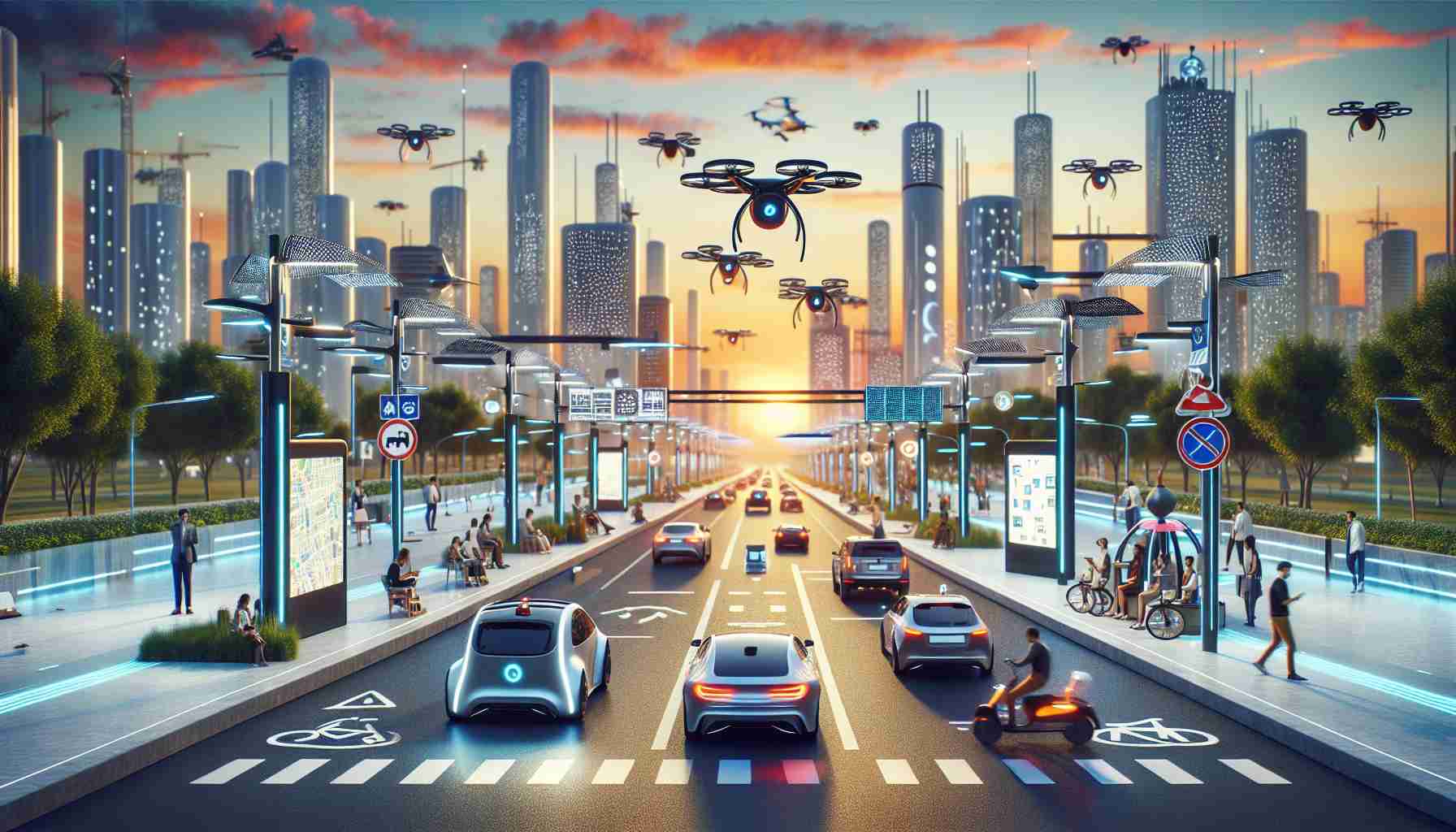The Booming Market for Autonomous Vehicles
The autonomous vehicle market is set to experience unprecedented growth, anticipated to increase at a compound annual growth rate (CAGR) of 40.2% until 2031. A recent analysis revealed that the market value, currently standing at US$ 954.1 million, is expected to skyrocket to US$ 10.158 billion by 2031. This remarkable escalation is spurred by advances in artificial intelligence (AI), cutting-edge sensor technologies, and the rising focus on safety and efficiency within the transportation realm.
Self-driving cars—or autonomous vehicles—utilize advanced technologies, including an array of sensors, cameras, radar, and LiDAR, paired with AI algorithms to traverse environments without human input. This innovation introduces a new level of convenience and operational efficiency.
Several key drivers contribute to this substantial growth. Firstly, AI and machine learning are crucial, enabling vehicles to process data and improve their navigation capabilities. Major automotive players, like Tesla and Waymo, are heavily investing in research and development, exploring diverse applications from passenger transport to logistics.
Government backing plays a pivotal role, with many nations introducing supportive legislation and infrastructure enhancements. Furthermore, the push for road safety is paramount, as autonomous systems aim to reduce human error-related accidents.
As this sector evolves, the potential for transforming transportation and mobility solutions aligns with global aspirations for sustainability and efficiency.
The Broader Impact of Autonomous Vehicle Advancement
The rapid expansion of the autonomous vehicle market carries significant implications for society and culture at large. As self-driving technology becomes more prevalent, it can potentially redefine urban landscapes. With increased convenience from autonomous vehicles, city planning may pivot towards pedestrian-friendly environments, ultimately reducing the need for extensive parking facilities. This shift could foster greater community engagement and social interaction as streets are reclaimed for leisure rather than vehicle storage.
From a global economic perspective, the implications are profound. The development of autonomous vehicles is expected to catalyze new job sectors while rendering certain traditional roles obsolete, particularly in transportation and logistics. The International Labour Organization suggests that millions of driving-related jobs could transition, highlighting the need for workforce retraining. Diversifying the skillsets of a displaced workforce represents not just a challenge but also an opportunity for more sustainable economic practices.
Moreover, the environmental impact could be noteworthy. As autonomous vehicles are increasingly integrated with electric vehicle technology, emissions could significantly decline, advancing global climate goals. This convergence may bolster sustainable transportation initiatives and reshape fuel consumption patterns.
Looking toward the future, several trends emerge. Expect advancements in shared mobility solutions, where autonomous vehicles contribute to car-sharing models, minimizing the number of individual cars on the road. This could create a cultural shift towards communal rather than individual car ownership, emphasizing sustainability over convenience. The evolution of autonomous driving is poised to challenge not only our transportation modalities but also the fundamental dynamics of urban living and environmental stewardship.
Driven by Innovation: The Future of Autonomous Vehicles
The Booming Market for Autonomous Vehicles
The autonomous vehicle market is poised for phenomenal growth, with experts projecting a staggering compound annual growth rate (CAGR) of 40.2% until 2031. Currently valued at US$ 954.1 million, the market is set to reach an astonishing US$ 10.158 billion by the end of the decade. This explosive expansion is largely attributed to advancements in artificial intelligence (AI), sophisticated sensor technologies, and an increasing emphasis on transportation safety and efficiency.
Key Features of Autonomous Vehicles
Autonomous vehicles, or self-driving cars, rely on an intricate combination of technologies to navigate roads without human intervention. These cars are equipped with a variety of sensors, including cameras, radar, and LiDAR, working in tandem with AI algorithms to perceive their environment and make real-time driving decisions.
Pros and Cons of Autonomous Vehicles
Pros:
– Enhanced Safety: By reducing human error, autonomous vehicles are expected to decrease road accidents significantly.
– Increased Efficiency: Optimized route navigation can lead to less traffic congestion and reduced travel times.
– Accessibility: Self-driving technology can provide mobility solutions for those unable to drive, including the elderly and disabled.
Cons:
– Technical Limitations: Current technology may struggle in complex driving conditions or adverse weather.
– Regulatory Challenges: There are still many legal implications and safety regulations that need to be addressed.
– Public Acceptance: Gaining consumer trust in self-driving technology remains a significant hurdle.
Market Insights and Trends
Developments in AI and machine learning are integral to the evolution of autonomous vehicles. Companies like Tesla and Waymo are leaders in the sector, heavily investing in R&D to explore a variety of applications, from personal transportation to automated logistics solutions.
Government support is also a crucial driver of growth, with numerous countries implementing legislative frameworks and infrastructure developments that promote the adoption of autonomous tech. Safety remains a top priority, and the technology aims to address human error, a causative factor in a substantial number of accidents.
Innovations on the Horizon
The future is bright for the autonomous vehicle market, with innovations continuously emerging. Vehicle-to-Everything (V2X) communication is becoming increasingly prevalent, allowing vehicles to interact with each other and surrounding infrastructure, enhancing overall traffic management.
Security Aspects
As autonomous vehicles become more integrated into society, concerns regarding cybersecurity are paramount. Protecting these vehicles from potential hacking or data breaches is critical as they store vast amounts of sensitive information and rely on continuous connectivity.
Sustainability Considerations
Interest in sustainable transportation solutions is driving the development of eco-friendly autonomous vehicles. These innovations align with global goals to reduce carbon emissions and promote green technologies within the automotive sector.
Future Predictions
As we look towards the future, the autonomous vehicle market is expected to revolutionize how we think about transportation. With ongoing enhancements in AI, regulatory support, and societal acceptance, this technology is set to transform mobility, making it safer, more efficient, and more accessible for all.
For more information on the latest trends and developments in autonomous vehicles, visit our main site.












